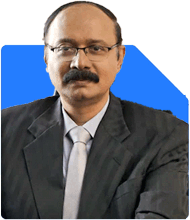Hello sir, I am 38 years old married, 1 child.Monthly expenses are 60k ( including the home loan emi).My present portfolio is 20 lakhs in ppf, 60 thousand in NPS (just started), 2 lakhs emergency fund fd,1.5 lakhs in sukanya samriddhi, 6 lakhs in mf (monthly sip of 20), home loan outstanding amount is 8 lakhs, 5 lakhs gold bond.I have around 90 lakhs to Invest, where shall I invest this money?
Ans: First, let’s appreciate your existing investments. You have Rs. 20 lakhs in PPF, Rs. 60,000 in NPS, Rs. 2 lakhs in an emergency fund FD, Rs. 1.5 lakhs in Sukanya Samriddhi, Rs. 6 lakhs in mutual funds (with a monthly SIP of Rs. 20,000), Rs. 8 lakhs in a home loan, and Rs. 5 lakhs in gold bonds. This is a well-diversified portfolio and a solid foundation.
Assessing Financial Goals and Risk Tolerance
Understanding your financial goals is key. You are 38, married, with one child. It’s crucial to plan for your child's education, your retirement, and possibly any other goals like buying a new car or a family vacation. Your monthly expenses are Rs. 60,000, including your home loan EMI. With Rs. 90 lakhs to invest, let's look at how you can make the most of this amount.
Emergency Fund Enhancement
Your emergency fund is Rs. 2 lakhs, which is a good start. However, for better financial security, aim to have at least 6 months of expenses set aside. With your monthly expenses at Rs. 60,000, a 6-month emergency fund would be Rs. 3.6 lakhs. Consider increasing your emergency fund by Rs. 1.6 lakhs.
Paying Off Debt
Your home loan outstanding amount is Rs. 8 lakhs. Paying off this debt can be a good idea as it reduces financial stress and saves on interest. Using Rs. 8 lakhs to clear this loan would free up your monthly EMI amount, increasing your monthly disposable income.
Enhancing Retirement Savings
Your contribution to NPS has just started. NPS is a good retirement vehicle due to its tax benefits and potential for long-term growth. Consider allocating a portion of your Rs. 90 lakhs to boost your NPS investment. This will enhance your retirement corpus significantly.
Child’s Education Fund
The Sukanya Samriddhi Yojana for your daughter is a great initiative. However, considering the rising costs of education, it’s essential to supplement this with additional investments. You might consider mutual funds focused on long-term growth, like equity funds, for building a substantial education corpus.
Mutual Funds for Wealth Accumulation
You already have Rs. 6 lakhs in mutual funds with a monthly SIP of Rs. 20,000. Increasing your SIP amount can significantly enhance your wealth over time. Actively managed funds can provide better returns compared to index funds due to active management and potential for higher gains.
Gold as a Hedge
Gold bonds worth Rs. 5 lakhs are a good hedge against inflation and market volatility. It’s prudent to hold onto these as part of a diversified portfolio. However, don’t increase your gold allocation further since it’s not a high-growth asset.
Direct vs. Regular Mutual Funds
You might have heard about direct mutual funds, which have lower expense ratios. However, direct funds require you to manage and monitor them yourself. Investing through a Certified Financial Planner (CFP) in regular funds offers you professional advice and management, potentially leading to better returns despite the slightly higher cost. The expertise and strategic guidance of a CFP can be invaluable in navigating market complexities.
Investing in Actively Managed Funds
Actively managed funds have the advantage of professional management aiming to outperform the market. They can adapt to market changes more effectively than index funds. Given your significant amount to invest, actively managed funds can offer the potential for higher returns through skilled management and market opportunities.
Diversification Across Asset Classes
Investing in a diversified portfolio is essential. Consider allocating your Rs. 90 lakhs across different asset classes such as equity, debt, and hybrid funds. Equity funds, including large-cap, mid-cap, and small-cap funds, offer growth potential. Debt funds provide stability and regular income, making them less volatile.
Equity Mutual Funds
For long-term growth, equity mutual funds are beneficial. Large-cap funds provide stability with moderate returns, while mid-cap and small-cap funds offer higher growth potential but with increased risk. A diversified equity fund portfolio can balance growth and risk effectively.
Debt Mutual Funds
Debt funds are ideal for stability and regular income. They invest in fixed-income securities like bonds and government securities. They’re less volatile and provide consistent returns, making them a suitable choice for conservative investors.
Hybrid Funds
Hybrid funds, which invest in both equity and debt, offer a balanced approach. They provide growth potential from equity investments and stability from debt investments. They’re a good choice for moderate risk-takers looking for balanced returns.
Systematic Investment Plans (SIPs)
SIPs are a great way to invest regularly and benefit from market fluctuations through rupee cost averaging. Increasing your SIP amount can enhance your investment corpus significantly over time. It also instills disciplined investing habits.
Lump Sum Investments
Given your substantial amount to invest, consider spreading your investments over time through Systematic Transfer Plans (STPs). This approach can mitigate market timing risk and ensure smoother entry into the market.
Tax Planning
Investments should also be tax-efficient. Tax-saving mutual funds (ELSS) provide tax benefits under Section 80C and have the potential for good returns. Ensure your investments are aligned with your tax planning to maximize returns post-tax.
Insurance
Insurance is crucial for financial security. Ensure you have adequate health and life insurance coverage. If you have any investment-cum-insurance policies like LIC or ULIPs, consider surrendering them and reallocating the funds into more efficient investment vehicles like mutual funds.
Regular Portfolio Review
Regularly reviewing your portfolio is essential to ensure it remains aligned with your financial goals. Market conditions change, and so do your financial goals and risk tolerance. Periodic reviews and rebalancing of your portfolio with the help of a CFP can ensure optimal performance.
Professional Guidance
Working with a Certified Financial Planner (CFP) can provide you with personalized advice tailored to your financial goals. A CFP can help you navigate market complexities, optimize your portfolio, and achieve your financial goals efficiently.
Building a Comprehensive Financial Plan
Creating a comprehensive financial plan involves assessing your current financial situation, setting clear goals, and devising strategies to achieve them. It includes budgeting, saving, investing, tax planning, and risk management. A well-structured financial plan can guide you towards financial security and independence.
Monitoring and Adjusting Investments
The financial markets are dynamic, and your financial plan should be adaptable to changes. Regular monitoring and timely adjustments to your investments are crucial. This ensures your portfolio remains aligned with your goals and risk tolerance, maximizing the potential for achieving your financial objectives.
Importance of Long-term Perspective
Investing with a long-term perspective is key to building wealth. Short-term market fluctuations are inevitable, but maintaining a long-term view helps in riding out volatility and achieving substantial growth over time. Patience and discipline are essential in the journey of wealth creation.
Leveraging Technology
Using technology can enhance your investment experience. Various financial apps and tools provide easy access to your investment portfolio, market updates, and analytical tools. Leveraging these tools can help you make informed decisions and stay updated on your financial progress.
Final Insights
Your financial journey is unique and deserves a tailored approach. By enhancing your emergency fund, paying off debt, investing in diversified mutual funds, and leveraging professional guidance, you can achieve your financial goals. Remember, the key to successful investing is a balanced approach, regular monitoring, and staying informed. Your commitment to financial planning today will pave the way for a secure and prosperous future.
Best Regards,
K. Ramalingam, MBA, CFP,
Chief Financial Planner,
www.holisticinvestment.in




























